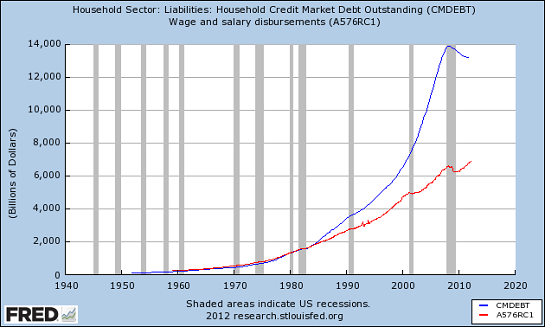Wolf Richter http://ift.tt/NCxwUy http://ift.tt/Wz5XCn
Kudos to the Bank of Japan. Its heroic campaign to water down the yen has borne fruit. The Japanese may not have noticed it because it is not indicated in bold red kanji on their bank and brokerage statements, and so they might not give their Bank of Japandemonium full credit for it, but about 20% of their magnificent wealth has gone up in smoke in 2013. And in 2014, more of it will go up in smoke – according to the plan of Abenomics.
What folks do notice is that goods and services keep getting more expensive. Inflation has become reality. The scourge that has so successfully hallowed out the American middle class has arrived in Japan. The consumer price index rose 1.6% in December from a year earlier. While prices of services edged up 0.6%, prices of goods jumped 2.6%.
It’s hitting households. In December, their average income was up 0.3% in nominal terms from a year earlier. But adjusted for inflation – this is where the full benefits of Abenomics kick in – average income dropped 1.7%. Real disposable income dropped 2.1%.
Abenomics is tightening their belts. But hey, they voted for this illustrious program. So they’re not revolting just yet. But they’re thinking twice before they extract with infinite care their pristine and beloved 10,000-yen notes from their wallets. And inflation-adjusted consumption expenditures – excluding housing, purchase of vehicles, money gifts, and remittances – dropped 2.3%.
But purchases of durable goods have been soaring. Everyone is front-loading big ticket items ahead of April 1, when the very broad-based consumption tax will be hiked from 5% to 8%. Pulling major expenditures forward a few months or even a year or so is the equivalent of obtaining a guaranteed 3% tax-free return on investment. That’s huge in a country where interest rates on CDs are so close to zero that you can’t tell the difference and where even crappy 10-year Japanese Government Bonds yield 0.62%. It’s a powerful motivation.
And it has turned into a frenzy. In December, households purchased 32.2% more in durable goods than the same month a year earlier, in November 25.2%, in October 40.4%. These front-loaded purchases have been goosing the economy in late 2013. But shortly before April 1, they will grind to a halt. The Japanese have been through this before.
In 1996, after the consumption tax hike from 3% to 5% was passed and scheduled to take effect on April 1, 1997, consumers and businesses went on a buying binge of big-ticket items to dodge the extra 2% in taxes. The economy boomed. But it ended in an enormous hangover. In the spring 1997, as the tax hike took effect, business and consumer spending ground to a halt, and the economy skittered into a nasty recession that lasted a year and a half!
First indications of a repeat performance are already visible. The Japan Automobile Manufacturers Association (JAMA) forecast last week that sales of automobiles, after an already lousy 2013, would plunge 9.8% this year to 4.85 million units, the lowest since 2011 when the earthquake and tsunami laid waste to car purchases.
In response, automakers will curtail production for domestic sales. Other makers of durable goods – those that still manufacture in Japan – will prepare for the hangover in a similar manner. Housing and construction will get hit. Retailers will get hit too. During the last consumption tax hike, many large retailers tried to keep their chin above water by not passing the 2% tax hike on to their customers but shove it backwards up the pipeline to their suppliers. This time, having learned its lesson, the government is insisting on inflation, and it passed legislation last year that would force retailers to stick their customers with an across-the-board 3% price increase.
In 2014, the hangover will be even worse than in 1997. Businesses and consumers are dodging a hike of three percentage points, not two percentage points. Hence, the motivation to front-load is even stronger, the payoff greater, and the subsequent falloff steeper. This, on top of the already toxic concoction of stagnant wages and rising prices. Oh, and the plight of the retirees, whose savings and income streams are gradually getting eaten up by inflation. The glories of Abenomics.
But there are beneficiaries. Japan Inc. benefits from lower cost of labor. The government, without having to reform its drunken ways, might somehow be able to keep its out-of-control deficits and its mountain of debt from blowing up in the immediate future. Throughout, the Bank of Japan, which is buying up enough government bonds to monetize the entire deficit plus part of the mountain of existing debt, will remain in control of the government bond market, what little is left of it – even if it has to buy the last bond that isn’t totally nailed down. But for the real economy the party is now ending, and by spring, a pounding hangover will set in.
According to Japan’s state religion of Abenomics, devaluing the yen would boost exports and cut imports. The resulting trade surplus would jumpstart the economy and induce Japan Inc. to invest at home. It would save Japan. But the opposite is happening. Read…. Why Japan’s Trade Fiasco Worries Me So Much







via Zero Hedge http://ift.tt/1fGFSue testosteronepit
